Review for Wolf's Rain - Ultimate Edition
Introduction
It’s a question that is constantly asked. What is the point of releasing early 2000s digipaint anime shows on Blu-ray? After all, the brief period between the end of cel and paint, and the advent of HD television was when all TV anime was animated at NTSC 480 lines resolution, and the best that you can ever get from that is an upscale. It’s a question that I’ve gone into countless times in recent years, as I’ve reviewed more and more classic anime on Blu-ray, and I could make mention of better colour definition, lower compression, progressive playback, scratchproof discs. But this is Wolf’s Rain. It can be answered in four words. Yoko Kanno, lossless audio.
Wolf’s Rain was a late discovery for me, years after everyone else had sung its praises and moved onto something new. I got the Bandai Anime Legends budget release, and was simply blown away by its peerless storytelling, its complex and compelling characters, its epic world-building. It’s since become a perennial classic in my collection, six discs that get an inordinate amount of re-watches (plus one recap disc that is less played). It very much is a series that you want in the best possible quality, and in as robust a medium as you can get. All it needs is a sympathetic upscale.
There is an ancient legend, one that tells of a paradise on Earth, something that is sorely needed in a time where people huddle together in enclosed cities, while all that remains outside are barren wastelands. The legends say that only wolves can find this paradise, but wolves have been extinct for two hundred years. Except they haven’t. Wolves walk among humans, disguised in human form, and with good reason when some people interpret the legend as a story of the final days, and see wolves as heralds of the apocalypse.
Three wolves live in a domed city, Tsume, the leader of a gang that raids the authority for food and wealth, Toboe, a young wolf that was adopted by humans, and has been living on the streets since his ‘grandmother’ died, and Hige who makes living among humans seem effortless. But their lives change when a fourth wolf named Kiba wanders into the city, following the scent of Lunar Flowers. Lunar Flowers are meant to point the way to Paradise, but this time the scent leads Kiba to a strange girl named Cheza, held in an experimental tank. Cheza is unique, a genetic creation, and together with Kiba, Toboe, Hige and Tsume, the five of them will take the long and perilous journey to Paradise. They will be pursued in their quest by humans seeking power in the waning days of the world, and who want to wrest paradise away from the wolves.
30 episodes of Wolf’s Rain are presented across 4 Blu-ray discs as follows, that includes the four recap episodes 15-18.
Disc 1
1. City of Howls
2. Toboe, Who Doesn’t Howl
3. Bad Fellow
4. Scars In The Wasteland
5. Fallen Wolves
6. The Successors
7. The Flower Maiden
8. The Song of Sleep
9. Misgivings
Disc 2
10. Moon’s Dream
11. Vanishing Point
12. Don’t Make Me Blue
13. Men’s Lament
14. The Fallen Keep
15. Grey Wolf
16. Dream Journey
17. Scent of a Flower, Blood of a Wolf
18. Men, Wolves, The Book of the Moon
Disc 3
19. Dream of an Oasis
20. CONSCIOUSLY
21. Battle’s Red Glare
22. Pieces of a Shooting Star
23. Heartbeat of the Black City
24. Scent of a Trap
25. False Memories
26. Moonlight Crucible
27. Where the Soul Goes
Disc 4
28. Gunshot of Remorse
29. High Tide, High Time
30. Wolf’s Rain
Picture
Wolf’s Rain gets a 4:3 pillarboxed 1080p transfer on these discs, and it’s something of a mixed bag. My first impressions were positive, clear and sharp, and with strong and rich colours. It looks to be one of those Q-Tec up-scales, although nowhere near as egregious as the one that FLCL got. There’s no smearing apparent to my eyes, and the only immediate sign of the treatment is the sharpened line art to give the show an HD feel. It’s the odd kind of sharpening that leaves most lines bold and clear, but the odd line can look a little faded and blurred, but it’s a rare thing, and really only visible if you’re right up against the screen. And you have no visible compression, and the animation is in 24 frames progressive format. It looks very watchable.
But I have the US DVD release from Bandai Entertainment to compare it with, and in that respect it falls a little short. The DVD can’t manage the same dynamic colour range, but when it comes to the up-scale, the line art is consistent in appearance. But more importantly, it appears the Blu-ray has lost some of the finer detail in the background artwork. It’s not immediately obvious as it was in the Gankutsuou Blu-rays, but if you have the DVDs to compare it to, then the difference will become apparent after a while.
The images in this review were kindly supplied by All the Anime.
Sound
You have a choice between Dolby TrueHD 5.1 Surround English and 2.0 Japanese Stereo with translated subtitles and signs locked to the appropriate track. The Japanese stereo offers splendid audio, expressive but not overbearing, and adequately conveying the action and the music, especially after having a little Prologic applied to it. It’s a good English dub from what I sampled, up to the standards demanded by the story and the characters, and on a par with the original actors. As for the music, well it is Yoko Kanno, and not only does she choose the most worthy and interesting of projects to compose for, but her music, as always lifts the anime into the stratosphere in terms of quality. Her score can be breathtaking, evocative, soaring, as well as subtle, gentle and mesmerising. The lossless audio does offer more clarity and warmth over the DVDs, but it’s a fine distinction.
Extras
The discs present their content with animated menus, and each kick off by autoplaying a trailer, Scrapped Princess on disc 1, Wolf Children on disc 2, Noragami on disc 3, and Fairy Tail Part 22 on disc 4.
All of the extras are on disc 4.
There is a 6:58 interview with the cast, Mamoru Miyano (Kiba), Kenta Miyake (Tsume), Hiroki Shimowada (Toboe), and Akio Suyama (Hige).
There is also an 8:20 interview with the cast, Unsho Ishizuka (Quent Yaiden), Takaya Kuroda (Darcia), Kaho Koda (Cher Degre), Mitsuru Miyamoto (Hubb Lebowski), and Ansa Ogasawara (Cheza).
There is also a 6:08 Staff Interview with director Tensai Okamura, producer Masahito Minami, and sound director Kazuhiro Wakabayashi.
There is a pilot film, two promo films, and four 15-second mini-promos for the show, all in all about 5 minutes worth of trailer.
You get the textless opening, and three textless closings.
Wolf’s Rain has subtly different closing sequences for each of the episodes, and the DVD release actually had 18 textless closings over its seven discs. Otherwise the extras are just the same as those on the DVDs.
Finally there are trailers for Escaflowne, Red Data Girl, Nobunagun, and Summer Wars.
Conclusion
If there is a list of must own anime, essential titles that should be on every shelf, it’s a fairly short list. You can stick Cowboy Bebop on there, Ghost In The Shell: Stand Alone Complex and maybe one or two others. Well you can add Wolf’s Rain to it also, and it’s probably not just a coincidence that Yoko Kanno supplies the music as well. As a composer, she has a distinct talent for picking worthy shows to work on, either that or her presence inspires animators and creators to give a hundred percent to making the show as good as it could be. And like all the best anime shows, Wolf’s Rain is immune to simple categorisation and analysis, certainly beyond the scope of a hastily written review.
Wolf’s Rain is about the end of the world, or rather the end of a world. I’ve seen plenty of apocalyptic anime series; some better than others, and by and large the most common theme is a dystopian, nihilistic vision of the future, and a pervading sense of hopelessness and inevitability. Said shows would be bleak, dark and relentlessly depressing. Of course there are some stunning shows made with that recipe, Texhnolyze springs to mind, and there’s no rule saying that the Armageddon needs to be bright and shiny and have a mascot animal. Wolf’s Rain does indeed do bleak and dark very well, but it also manages to balance it with hope and optimism. One of the things that really made this show stand out for me was the thought gone into creating the world and this story. It touches on mythology, on creation myths and myths about the end of the world, and you can see hints of influence from many cultures and belief systems in the way it develops. I particularly noticed Hindu influences in the cyclic worldview, and was impressed at the way it was adapted into the story.
In this story, wolves were there at the start of the world, and it is they who will herald the end, when they are called to find Paradise, which will only open to them. It’s no wonder at the start of the story, wolves are considered extinct, having been hunted by humans who want to forestall the end of the world. Except they haven’t vanished, instead they hide among men, able to cloak themselves in human form, and elude the superstitious. It’s a masterstroke for the animation, as it does away with the need for Disney-esque anthropomorphism, the wolves are wholly lupine and behave as such, but in their human form are able to emote and interact with other people. As the story progresses, the lines between the two may blur, but it’s naturally done, and always utterly believable in the context of the story.
It’s an interesting world that we are introduced to as well, with humans living in closed communities, in domes and in rundown cities, apparently apathetic and uncaring, more devoted to living day to day, than invested in any sort of future. Above them are the rulers, the Nobles who own the cities, and play their games of politics against one another, not caring about the human cost or the damage they inflict. It becomes clear that they are the remnants of a master race, although it’s never clarified whether they are superior humans or something different. They are long-lived, have advanced technology at their disposal, and maybe even arcane powers. And among them, hidden, live the wolves. Most of the humans, if they knew about the wolves, would kill them to forestall the prophesied end of the world. The Nobles want to bring about their own form of Paradise, while the wolves have mostly forgotten or discount the prophecies, and just want to live out their days in peace. That’s except for one wolf. And key to it all are the lunar flowers.
It’s primarily a character-focussed show, and the emphasis on character arcs and developing them over the 26-odd episodes makes this show stand out. The story is strong and engrossing, but it never overwhelms the cast, and as such the show allows for greater empathy and audience investment. You care about what happens to the wolves and the humans in this story, and once it grabs you, it doesn’t let go. Central to it all are the four wolves, with Kiba the driving force behind the search for Paradise, determined, proud, and utterly sure of his faith. He’s drawn to Freeze City by the scent of Lunar Flowers, in a world where the flowers are considered just as extinct as the wolves of legend. It’s there that he meets the other three wolves. Tsume is a lone wolf in search of a pack. He’s moody, self-centred and arrogant, but he’s still gathered a band of humans around him to raid official transports for food and supplies. When Kiba shows up, offering him a better life and a better future, Tsume’s the most reluctant to join him. Then there is Hige, just as much a lone wolf, but one who is easy-going and apt to go with the flow. He’s amiable and likeable, but not necessarily all that dependable, apt to think of food first and foremost. Then there is Toboe, the runt as Tsume calls him. He was found as a pup by an old lady, and raised quite domesticated and comfortable around humans. Except that the old lady died, and he was left to scavenge on the streets. He’s nervous, fearful and naive, but he’s also friendly, trusting and eager.
It’s not just a simple flower that drew Kiba to the city though, rather a curious young girl named Cheza. As part of the Nobles plan to create their own paradise, Cheza was engineered, a girl created from the Lunar Flowers, and as such she became a pawn of the Nobles. She’s currently in the possession of the Lord of Freeze City, and she’s being held in a tank, subject to countless experiments. It’s Kiba’s aim to free her, and have her lead them to Paradise, but she’s like a newborn, experiencing the world for the first time. As a Lunar Flower, she has a natural affinity for wolves, and Kiba’s arrival in particular begins to awaken her from her slumber. A Noble named Darcia, whose own tragic story began with Paradise, created her and he wants to use Cheza to restore what he has lost. But he’s just one Noble player in the game, and it becomes clear that another Noble named Jaguara has far more destructive designs on Cheza.
The first human we meet is wolf hunter Quent Yaiden, who comes to Freeze City apparently tracking Kiba. His constant companion is a large hunting dog named Blue, and he has in his heart a thirst for vengeance ever since his family was killed by a pack of wolves. He’s certain that the wolves finding paradise is synonymous with the end of the world, and even if there is a paradise, it won’t be one for humans. When the four wolves start their quest, he’s hot on their tracks. Also on the trail is researcher Cher Degre, who was leading the study of Cheza before she was taken from the laboratory. She’s committed to her work, fascinated with the Lunar Flowers, so much so that it led to the breakup of her marriage to Detective Hubb Lebowski. Hubb enters the story when he runs into Quent Yaiden, and slowly learns that the fairy tales about wolves have a grain of truth to them. As the stakes are raised and the situation becomes serious, he realises what his ex-wife has gotten into, and decides to rescue her. As occasionally happens, their divorce wasn’t at all rancorous, and instead has merely increased the affection between them.
Wolf’s Rain had a somewhat bumpy ride in its creation, initially a 26-episode television series. You can see episode 26 offers a major story conclusion, and a climactic crescendo, but remains a non-ending in terms of the character stories. The final four episodes were direct to DVD OVA episodes that actually raised the already excellent animation quality, and took the story to its natural conclusion, dramatic and emotional, but comparatively understated next to the end of the TV series. Of course other than the rather odd pacing, it’s a total non-issue in this complete series collection, as are the recap episodes. A lot of shows have them, when money becomes scarce, or animators need to be rested. Halfway through will be a clip show that succinctly tells what has come before, an essential reminder when you are watching one episode a week, but annoying when you watch the show as a marathon. Wolf’s Rain has four of them, and all of them in a row. You have to wonder what the studio was facing that required them to down pens for a whole month. You may watch the once, out of curiosity, but you’ll lose nothing by ignoring it completely, and you certainly will never return to it (I didn’t watch them for this review). They are put together well, clip shows that recount the story through four of the characters’ points of view, but they really offer nothing new. When the singles were released by Bandai in the US, volumes 4 and 5 were released a week or so apart, and fans had the option of ignoring volume 4 altogether. Of course with the larger capacity of Blu-ray, that isn’t an option when you have nine episodes on a disc.
Wolf’s Rain is a peerless story, with character development miles above the usual anime stereotypes. This is smart, thoughtful writing, excellent voice acting, and it looks effortless. It comes together in a way that just draws you in, and ties you emotionally to the characters. It’s a deft blending of light and dark, of hope and despair that is far more moving and affecting than something that would be relentlessly bleak. With that as the solid foundation, there is the astounding animation, of almost theatrical quality throughout, with gorgeous character designs, and lush and detailed settings. It almost makes a world teetering on the edge of oblivion an attractive prospect. Of course there is Yoko Kanno’s music, which as so often is the case, is an extra character in the show, perfectly reflecting the mood and emotion of the story, the gravity of the highs and lows, and downright delicious in its own right. Wolf’s Rain is a show that you will watch again and again, and a reminder that talking animals doesn’t always mean Disney.
I haven’t seen any of the physical extras that go with this release, the packaging, art cards, posters and art book, but I have a sense of Penultimate rather than Ultimate edition from reading the description; the reason being that I still recall Beez Entertainment’s Definitive Edition release, with the faux leather packaging, and the first soundtrack CD. I love extra goodies that can be used, and if All the Anime had managed to obtain both CD soundtracks for this release, I would have been more comfortable with the ‘Ultimate’ label.
As for whether it’s a worthy upgrade or not, it’s a very fine line between the DVDs and the Blu-ray. This isn’t a Gankutsuou situation where the differences between the formats were blindingly obvious, with Wolf’s Rain it’s more of a subjective thing. When it comes to the visuals, I’ve seen worse QTec up-scales, the colour rendition is marginally stronger, the animation marginally smoother (apart from a couple of jerky scene transitions), but I feel the DVD image has more consistent line art, and there is more detail in the background art (some might call it compression noise). As for the audio, lossless audio is good, but the DVDs had really strong, well encoded audio in their own right, so the difference is less palpable. It really boils down to whether you want player forced subtitles or not. Of course the Beez DVDs will have NTSC-PAL conversion issues over which this Blu-ray is a more obvious improvement, but if you have the Bandai release, then it’s really only the physical extras that will tip the balance.

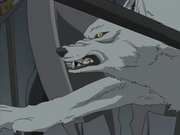
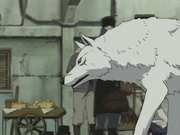
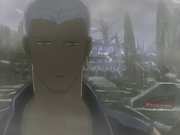

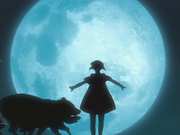
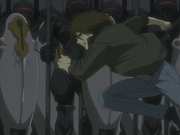
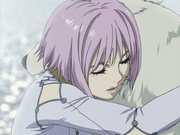































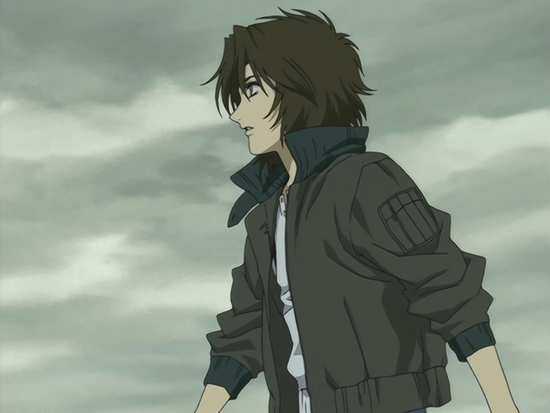






Your Opinions and Comments
Be the first to post a comment!